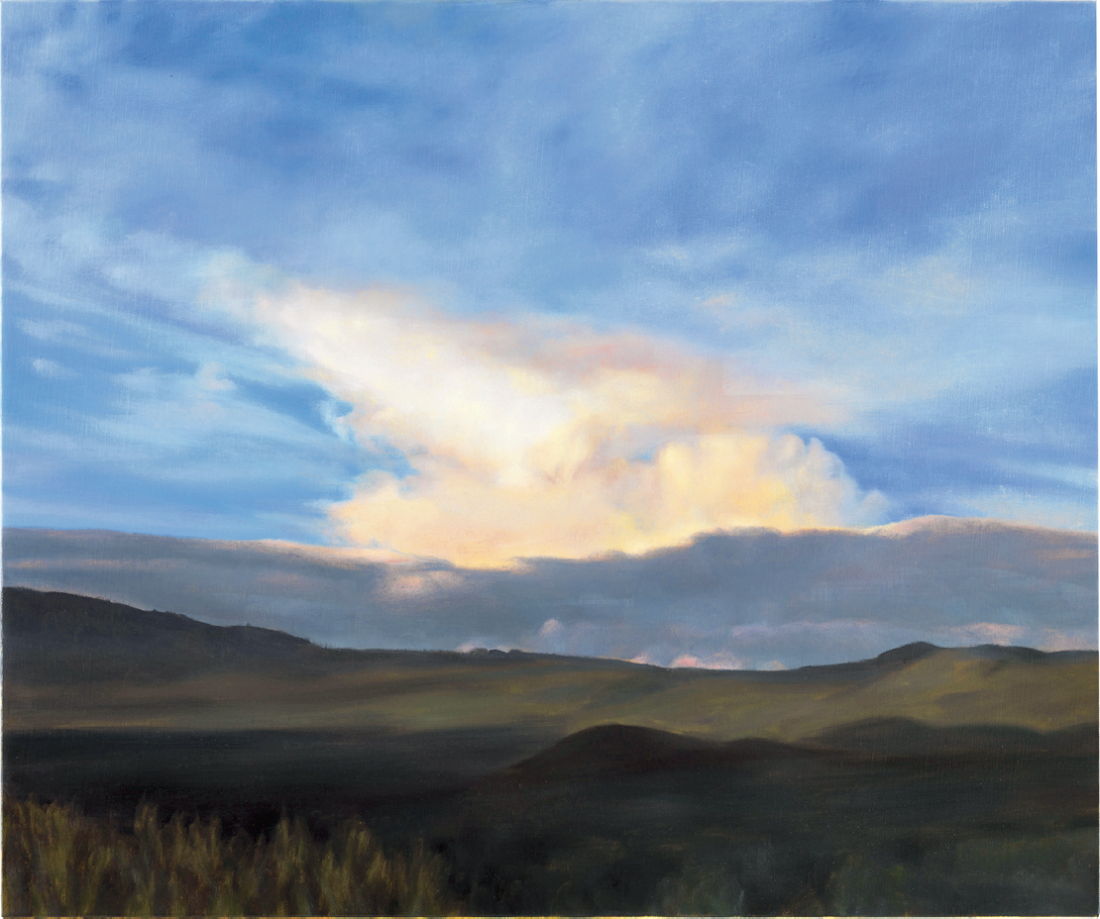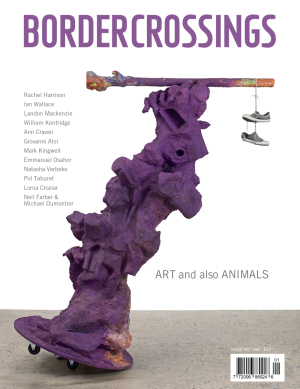April Gornik
The painter of nature emerges as sure-handed dramaturge in these 13 majestic, moody oil-on-linen landscapes. Though much compared to Turner or the Luminists, April Gornik conveys nature less for its edgeless sublimity than as a world of concentrated scenarios we inhabit. Noted art historian and writer James Elkins has probed painting’s kinship with alchemy; standing in front of Gornik’s canvases, we can feel paint’s substance brewing into weather. Skies simmer and slight, occasional soft-focus holds the heft of interposing air. The subject of Cloud Before Twilight, 2011, bodies forth a rosy, fulgent light while the horizon vacuums it back beyond the hills, feathering the rest of the sky so that it seems more a force than vaporous matter. In The Rains, 2009, the sky moves into the picture as sheer volume, its storm-laden cumuli almost quarry-like. These are places felt in the round, sensuously assimilating pressure and temperature. In Sea After Storm, 2010, a velvet shelf of ocean is abruptly cut off, as if knife-lopped, to crash like a wide waterfall, mid-canvas. Dense, luxurious and clamorous, the curls and spume challenge us to focus, while the distance between us and those falls quietens again, as milky pleats of surf spread to the foreground. What is that tumult in the midst of such tranquility?

April Gornik, Cloud Before Twilight, 2011, oil on linen, 25 x 30”. Photographs: Christopher Burke. Images courtesy the artist and Danese, New York.
This “something off” is a quintessential Gornik device—a trace of nature, perception and art alike—assisted by technology and verging on psychic allegory. Working from photographs she has digitally altered, her paintings present transposed versions of real places, naturalized and just denatured enough to puzzle over. Consummated by dexterous paint handling, the process ably captures uncanny experiences and memories of place, swaying between absorption and disquiet, foreignness and déjà vu. Such flux feels ever more taut and subtle in this show. Across a fiery mountain flank in Sand, Shadows, Time, 2010, a big shadow skulks until it glides into a furrow and nestles there. The sun-kilned, sculptural orange and golden- rod ranges, outstretched between ochre brambles and indigo sky, belong unmistakably to the severe grandeur of the American Southwest. Yet the peculiar detail of a distant peak, terminating in a perfectly smooth, shining pyramid, ushers in fantasy. Uncannier still is Black Wave, 2011, where, in the middle of an ordinary beach, sepia at dusk, an improbably long, solid slab, darker than the leaden sky, displaces the ruffled waves around it. It could be read as a cut in the canvas, surreally gesturing outside the pictorial plane altogether, but up close it displays the rugged features of actuality. And while the painting’s minimalist upper half could pass for colour-field abstraction, gunk in the sand and tousled surf again make a place of the planes. Sometimes nature presents this sort of haunting, accidental formality. Centered by the painting and facing us, however, its anomaly acquires the significance of an organizing entity—recalling how, in Wallace Stevens’s “Anecdote of the Jar,” a jar placed “upon a hill/made the slovenly wilderness/Surround that hill.”

April Gornik, Black Wave, 2011, oil on linen, 24.25 x 32.25”.
In interviews the artist has mentioned her affinity for Donizetti and Verdi operas and Piero della Francesca’s frescos. It is precisely as staged spaces that her own works resonate. An intensified expression of our being-in-the-world, opera is true to life because it is non- naturalistic and driven by “the desire to express all” (as Peter Brooks has written of melodrama) and achieve “victory over repression.” Opulently palpable, Gornik’s paintings seem to understand similarly that experience is theatre.
Perhaps Gornik favours oceans, clouds, shadows and reflections, because in those migrating forms and littoral zones nature approaches and recedes—echoed by our own inner response to its hospitable correspondences cum radical exteriority. “For whatever you lose (like a you or a me),” wrote E. E. Cummings, “it’s always ourselves we find in the sea.” Gazing into Gornik’s paintings we are, by turns, awestruck and fully immersed. ❚
“April Gornik: New Work” was exhibited at the Danese Gallery, New York, from October 14 to November 12, 2011.
Chinnie Ding is a regular contributor to Artforum.com and teaches literature at New York University.

